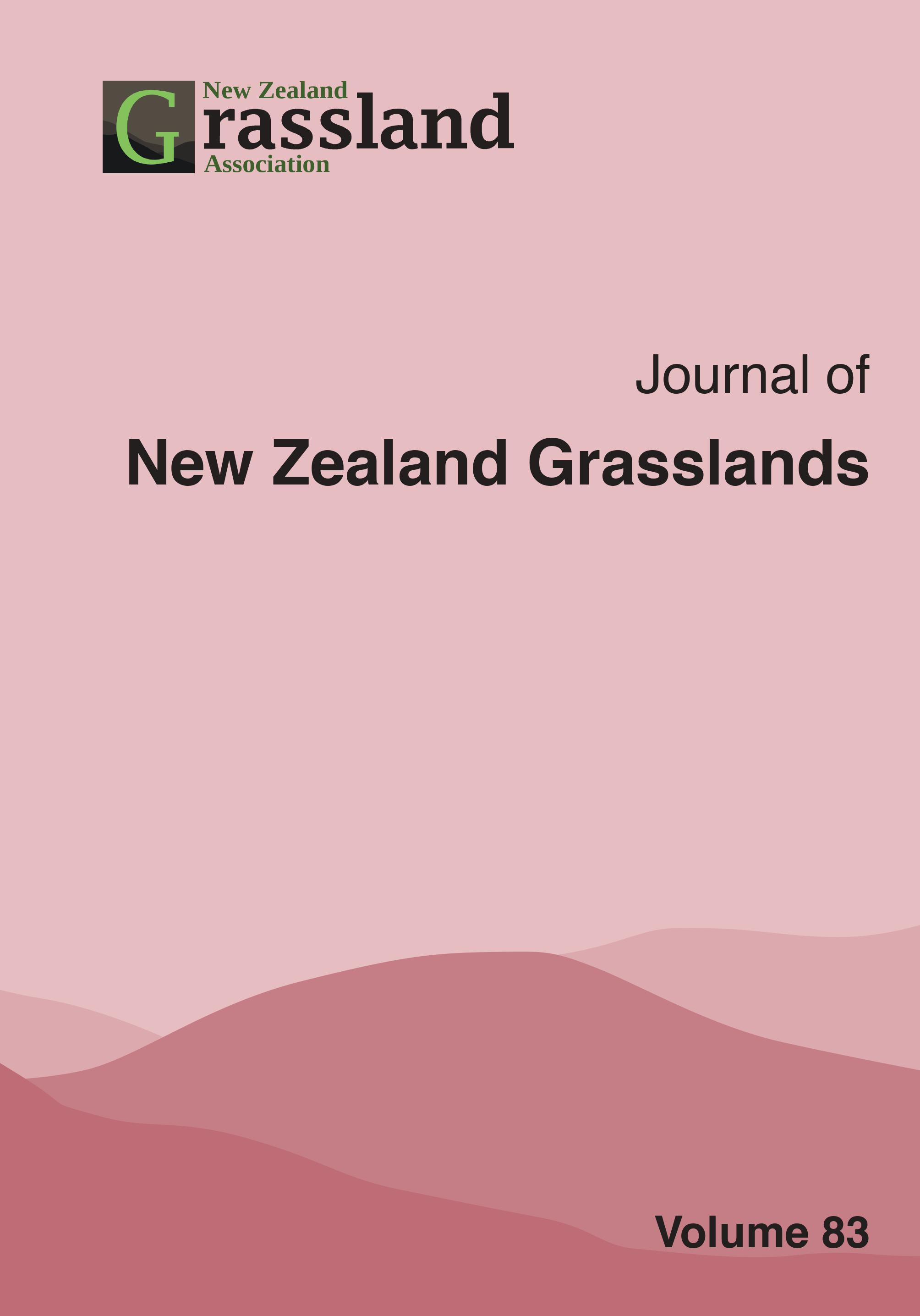Quantification and mitigation of nitrogen leaching in a maize silage cropping system
DOI:
https://doi.org/10.33584/jnzg.2021.83.3506Abstract
Nitrogen (N) leaching is a major source of groundwater contamination. We used a series of lysimeters and suction cups to measure total N leaching losses in a high N maize crop system on a long-term maize paddock in the Waikato.
The goal of the study was to 1) quantify N leaching losses under maize silage, 2) determine the effectiveness of a cut-and-carry annual ryegrass catch crop (RG) in mitigating N leaching losses and 3) determine an appropriate depth for measuring N leaching losses under maize.
At least 200 kg/ha more fertiliser N than calculated plant requirements was applied to the maize crop to ensure surplus soil N after maize.
Nitrogen leaching losses were measured in a maize-RG and maize-fallow rotation over two seasons (October 2018 - September 2020). Less than 10 % of N leaching losses occurred during the maize growing season. This is likely due to evapotranspiration exceeding rainfall in summer.
The greatest leaching losses were observed in the maize-fallow rotation, averaging 60 kg N/ha and 88 kg N/ha for the 2018/19 and 2019/20 seasons. This was despite 2020 winter being drier than 2019. The greater 2019/20 leaching losses can be attributed to a greater soil N concentration (+15 mg N/L) in 2020.
The importance of catch crops as a N leaching mitigation tool after maize was evident over the two years, resulting in leaching reductions >85% in the maize-RG than the maize–fallow plots. The catch crop removed >200 kg N/ha from the soil, significantly reducing the soil N concentration, which appear to be the main driver of leaching losses in our study. Additionally, RG also increased gravimetric soil water content by 7.3 % in the top 30 cm.
When N leaching was measured at 70 cm, losses in fallow plots were almost three times higher than the 41.6 kg N/ha recorded at the 120 cm soil depth, our default maize rooting depth.
A similar amount of isotopic 15N (1.2 %) was observed in maize grain at maturity when 15N was inserted to 60 cm or 120 cm soil depth. This was greater than the background values obtained when standard urea was applied to the plots (0.37 %), indicating 15N interception at depth.
It is speculated that provided fertiliser rates match crop N demand and catch crops are used, N leaching losses in maize crops should be much lower than values reported here, irrespective of soil type and season.
Downloads
Downloads
Published
How to Cite
License

This work is licensed under a Creative Commons Attribution-ShareAlike 4.0 International License.
Copyright
This work is licensed under a Creative Commons Attribution-Non Commercial-NoDerivatives 4.0 International License. Rights granted to the New Zealand Grassland Association through this agreement are non-exclusive. You are free to publish the work(s) elsewhere and no ownership is assumed by the NZGA when storing or curating an electronic version of the work(s). The author(s) will receive no monetary return from the Association for the use of material contained in the manuscript. If I am one of several co-authors, I hereby confirm that I am authorized by my co-authors to grant this Licence as their agent on their behalf. For the avoidance of doubt, this includes the rights to supply the article in electronic and online forms and systems.




